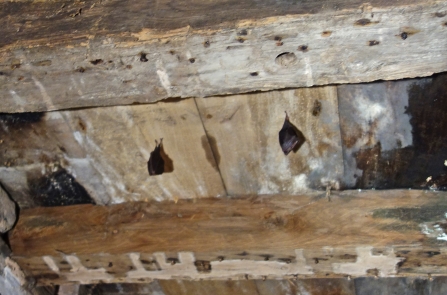Papermill Cottage, part of Worcestershire Wildlife Trust’s The Knapp and Papermill nature reserve, was once a paper mill on the Leigh Brook. It was last lived in by humans in the 1960s but is now home to a population of scarce bats.
A colony of lesser horseshoe bats has taken up residence in the derelict cottage but work to ensure the stability of the building will include lots of new features to ensure the bats have a boost to their roost.
Dominique Cragg, conservation officer for the Trust, explained “This project has been a while in the making – surveying for bats, planning exactly how we can help them and working out when the best time of year to do the work could be so that we don’t disturb them in the winter months when they wouldn’t be able to find food whilst making the cottage perfect for them to start breeding this year.
“We know that there are at least 47 lesser horseshoe bats living at Papermill Cottage and that they usually breed there over summer so we need to include a variety of different places for them to move around within the house. Having two different bat lofts in the roof space, for example, will allow breeding females to move to the warmer loft in summer whilst allowing males or non-breeding bats to perhaps stick to the cooler loft.”
Boosting the bat roost
Two bat lofts are being installed in the roof space, which is currently one big open area. The lofts are large triangular-shaped boxes with an opening to allow the bats freedom to fly in and out.

